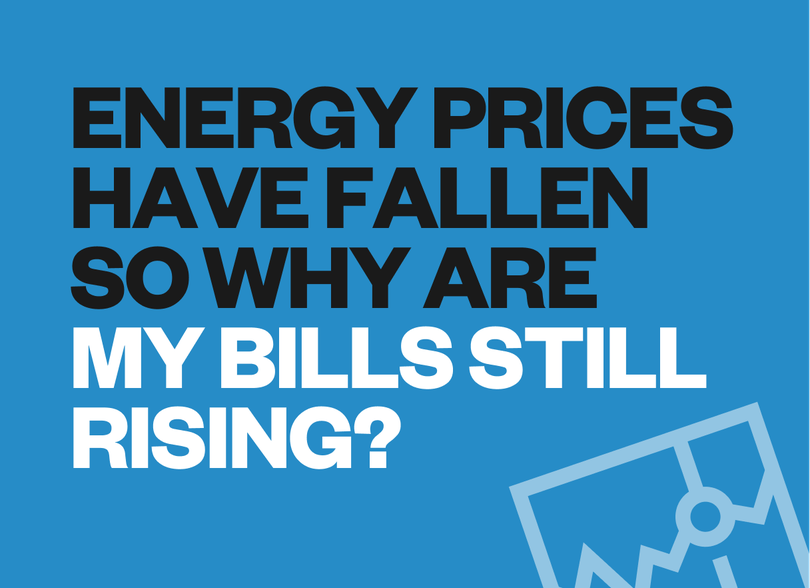
Energy Prices Have Fallen So Why Are My Bills Still Rising?
Almost 7 months ago, I wrote a blog attempting to explain why energy prices were rising. Since then a lot has changed. As I mentioned back in August, a warm winter could help bring prices down. As I write this on a blustery March afternoon it doesn’t feel particularly warm, but it has been a warm winter in historic terms. Apart from a couple of weeks in December, the temperatures have tended to be above the seasonal norms from October to the end of February. This, along with plentiful supplies of Liquified Natural Gas (LNG) from the US and the Middle East, has meant that the extremely high prices didn’t continue over the winter period as had been previously predicted. Large amounts of gas remain in storage across Europe because the high prices have caused demand to fall, and this has subsequently caused prices to fall from their peak in mid-2022.
As a reminder, below are some of the events that caused energy prices to rise well above what we would normally expect. Remember, Russia historically has supplied 40% of Europe’s gas needs and even though the UK does not directly import much Russian gas, the price of gas across Europe is all linked. And, as a majority of the energy generated in the UK is produced by gas, when the gas price goes up the power price follows and vice versa.

So why are my energy bills going up in April when wholesale prices are falling?
As usual, it is not as simple as it sounds and is due to a combination of factors:
Government Support
The Government’s Energy Bills Support Scheme has, since October 2022, provided households with a £400 discount on their electricity bills. From April, this support is being scaled back and all homeowners will see their payments rise by at least £67 per month. The Energy Price Guarantee will remain at £2,500 per year but remember that this is not a limit on what your total bill will be - it only reflects average usage. So if you use more energy, you will pay more. If you use less, you'll pay less.
The Price Cap
The energy regulator, Ofgem, sets a limit to how much suppliers like us can charge customers on a Standard Variable Tariff. This is currently set every 3 months in arrears. So for example, the cap for April to June 2023 was set using the market prices between November 2022 and January 2023.
As you can see in the graph below, although prices were falling between November and January, they were still much higher than they are today. The graph also shows what the predicted future price caps could be based on prices remaining the same as they are today. You’ll notice they are falling throughout the summer. If, however, prices rise now, the future price caps will be correspondingly higher.
Hedging
Finally, to protect from short-term price spikes, at So Energy (along with most other energy suppliers) we buy our gas and electricity in advance. Therefore, some of the energy required for April and beyond was bought last year when prices were significantly higher.
All of this means that the effects of the wholesale price on what customers pay are delayed. This is good news when prices are rising but means the price falls take time to be reflected in your bill.

Given all that, when will my bills start to fall?
As you can see in the graph above, the most recent price cap announcement from 27 February set the cap for the period between April and June 2023 at £3,280. This was a significant fall from the previous cap at £4,279 but both are higher than the prevailing Energy Price Guarantee meaning that our customers are protected from these high levels. However, come July (and so long as there is no unforeseen event that causes prices to jump again), it is expected that prices will decrease, closer to £2,000.
The restart of Russian pipeline gas isn’t expected anytime soon, and LNG replacement is fundamentally more expensive, so prices have not returned to historic levels. Until Europe becomes less dependent on LNG, be that because of more renewable generation or peace in Ukraine, prices are likely to remain higher than they were before the start of the war for some time to come.
It’s worth remembering that the market price of gas and electricity only makes up two-thirds of the typical domestic energy bill. The rest comes from things like the cost of building and maintaining the national energy infrastructure and government policies such as helping vulnerable customers.
Share this article